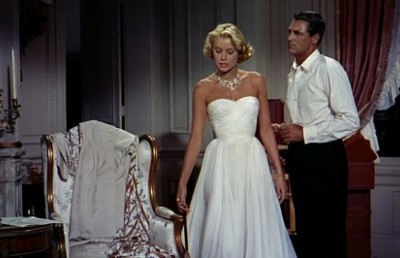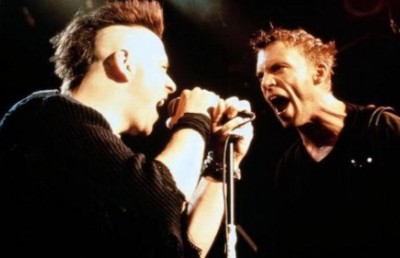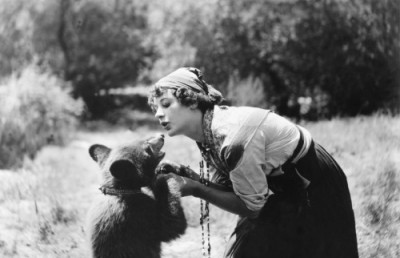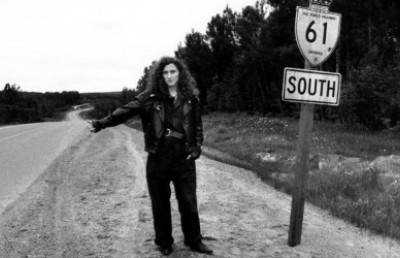Karen Walton in Montreal: Chatting About Ginger Snaps
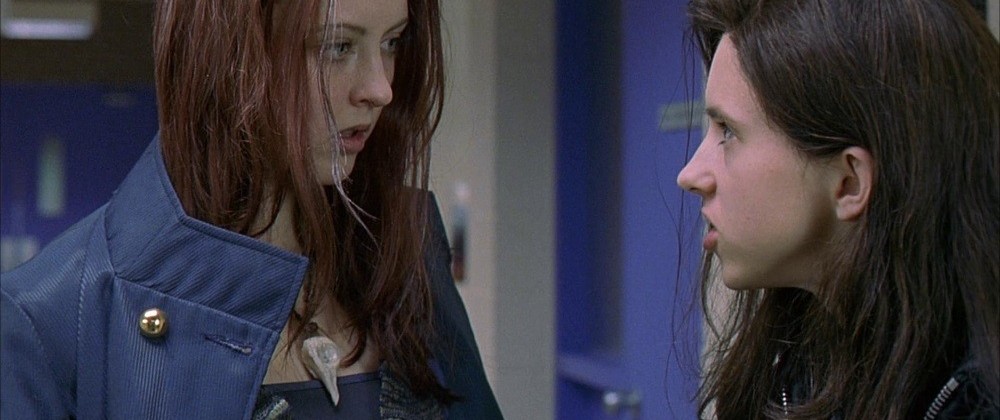
There were many screenings in Montreal as part of the 150th anniversary of Canada celebrations, including one organized by Fantasia International Film Festival at the Phi Center of the 2000 John Fawcett directed coming-of-age werewolf film, Ginger Snaps. I have seen Ginger Snaps many times and routinely show Ginger Snaps in my courses and in fact had just done so about a month prior to the screening, so was not particularly eager to see the film again so recently. But when King-wei Chu from the Fantasia Film festival told me that screenwriter Karen Walton was an invited guest and that he could arrange an interview with her, well that changed the complexion of everything. Although Walton has given many interviews on the film over the years she always struck me as honest, humble and articulate, and seemed like she would be a fun person to meet and chat with. So I waded through a dreary wet night to travel to Old Montreal to meet Karen Walton and, yes, watch the film again. Interestingly, I showed a 35mm print in my course and the Phi Center screening was projecting the film on DCP, so the contrast in screenings was an added bonus that made the choice to view it again worthwhile. I found the DCP version to be not only crisper –which is to be expected with a digital screening, but not necessarily better– but much more vibrant in its art direction and production design, with colors popping out of the frame much more than I had remembered with the 35mm print. But the 35mm print trumps the DCP in its depth, grain and cinematic texture. Ginger Snaps is a film which really needs little introduction, as it is a bona fide cult classic that is fun, scary, witty and rich in visual and thematic detail. One of the reasons it has struck such a profound cord with many people is the strong performances of the two lead sisters, Brigitte (Emily Perkins) and Ginger (Katherine Isabelle), who play two sullen, sardonic goths who wrap themselves up in nihilism to survive their dreary Bailey Downs suburban existence of high school, boring parents and indifferent peers. On the cusp of womanhood, in fact right at the moment of her first menstrual period, Ginger is attacked by a wild beast on all fours and begins a slow transformation that is at once positive –she becomes more aware of her sexuality and oozes with a new found confidence, of sorts– but at an expensive cost of physical and emotional regression to primal, bestial urges that jeopardize her relationship with her sister and her own humanity. It is a film which shatters many conventions of the standard werewolf film by keeping the emotional turmoil of sisterhood, womanhood and an expansive notion of ‘neighborhood’ (friends, family, sense of identity, etc.) at the core of the story. I sat down to talk with Karen Walton thirty or so minutes before the screening of the film, in a small office to the right of the screen. She was an enthusiastic, wiry ball of energy and would no doubt be a fun person to hang out and chat with over a beer. You’ll probably note that Walton likes the word “dude” which she uses at times as a playful put down of masculinity. My guess is that she has seen The Big Liebowski a few times! Following my interview is a transcription of the Q & A she conducted with the audience right after the screening.
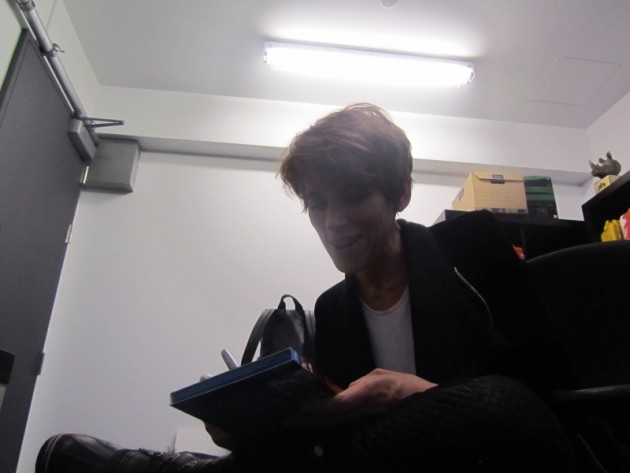
Karen Walton signing my Blu Ray copy of….what else, Ginger Snaps
Offscreen: What is so strong about Ginger Snaps is the relationship between the two sisters Ginger (Katharine Isabelle) and Brigitte (Emily Perkins), which is complex, fun and evolving. It is interesting that when people write or talk about the film the first thing that stands out is how Ginger becomes empowered sexually after she is attacked by the werewolf. I love to show the film in my courses. The film is also often talked about as dealing with identity and feminist empowerment but when students start analyzing the relationship between the two sisters they struggle to negotiate Ginger’s empowerment with the feminism because her empowerment also causes her to grow distant and separate from her sister Brigitte, which creates a sense of melancholy. So how do you figure in the feminism part of it? How is it feminist empowerment but also good for the sisters?

Ginger feeling uncomfortable over attention from men
Karen Walton: Very very simple. When you are growing up there is a corner that you turn, actually there are probably 180 corners that you turn! And through that transformation you are watching her body changing into the werewolf, the changing of her body into a monster. The two sisters had this childhood bond with their pact. These two sisters were also best friends who created a bubble for themselves and took strength from each other, nourished and informed each other for a long time; but the film is not just the story of Ginger turning into a monster. It is also a story about Brigitte surviving her sister who is on a death spiral. Ginger’s is a story of self-destruction. Which is the antithesis of a feminist story. Of buying into that idea that, “I am getting sexy now, the boys all want to look at me. Because it is all about my gratification.” That part of Ginger’s transformation is like mimicking a gluttonous, cartoon-like existence that at least in my own writing I associate with the tradition of the white male. The idea that, hey if I am powerful I get to do what I want. This is the opposite to Brigitte who wants to talk to Ginger, see what is wrong and try to fix it. Brigitte sees that she is making herself vulnerable and putting other people in danger. But where people get confused is that they think Ginger is the hero, but the film is really about a sister who survives a sister, who survives a best friend. An intimate relationship that becomes unhealthy and then deadly. And to react intact with her own mind instead of what Ginger wants, which is how they have always grown up . Brigitte actually finds herself and certainly makes the decision at the end that things cannot continue the way they are. She takes charge of her own experience. Unfortunately it becomes too late to save Ginger and that relationship.
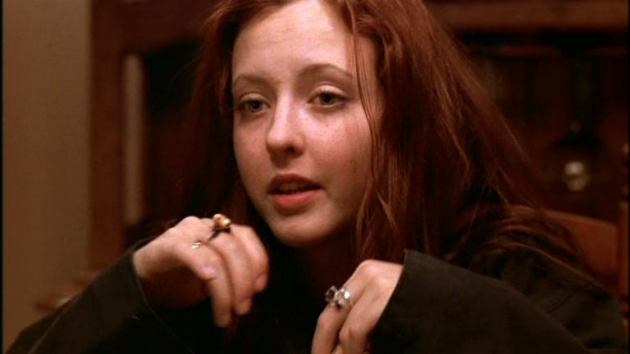
Ginger Pre-Bite
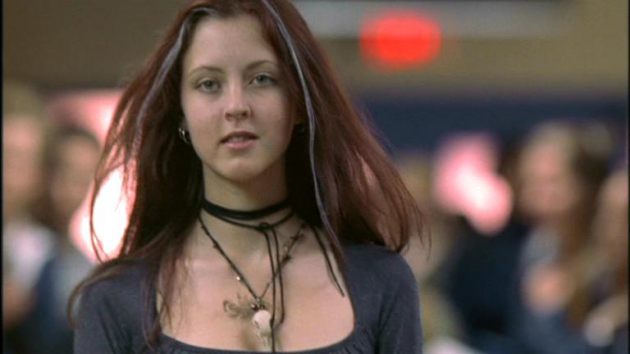
Ginger Post-Bite
Offscreen: And the mother actually tells Brigitte, “Your next.” But we never know whether Brigitte starts her menstrual period. Even in the second film I’m not sure if that is brought up.
KW: Well I did not write the second or third so it’s just like, well that is interesting.
Offscreen: I also like the way the set is designed especially the sister’s room in the basement and how there are no cultural indicators on their walls. No posters of boy bands, sports figures, nothing hip.
Karen Walton: Well remember that the setting of the film is where the four key production figures of the film were from: the suburbs, where there is nothing but roofs for miles. This is very common in America west of Central Canada. These huge subdivisions where there is nothing. Like in the mockumentary by Gary Burns (Radiant City, 2006) which is set in one of these sprawling suburbs. Even though it is more recent, about 10 years after Ginger Snaps, following the lives of people who have nowhere to go, nothing to do and no one to be.
Offscreen: The Reflecting Skin though set in a rural place is set in a similar world that has the same expensive feeling of nothingness.
Karen Walton: Yes. Life on the edges. You want to have the nice fences, around the nice house, outside the city. At the edge of the wilderness and we are eating that up as we go along. Just as the monster, the creature that bites Ginger, eats into their lives. That is why we open with something killing dogs. That opening establishing shot is to show you the two worlds. One that is identical and monotonous and soul numbing. Again, myself, John Fawcett, our DP Tom Best, and our production designer Todd Cherniawsky, we all grew up in places like that. When I started writing about where I’ve lived everyone started to recognize that, even though we are all from different parts of Canada.
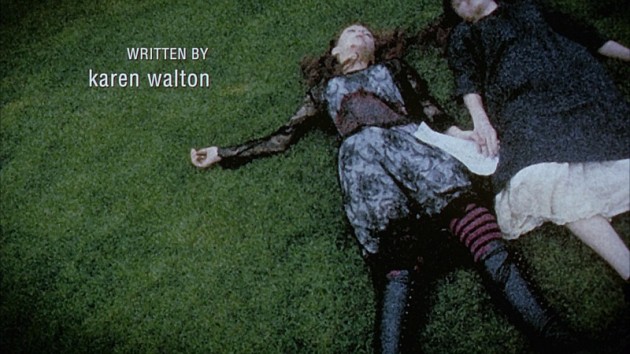
Suicide Art as summer school project
Offscreen: I want to ask you about one of my favorite moments in the film which is the opening where we see the suicide art project by Brigitte and Ginger. It is so distinct and different stylistically from the rest of the film, marked off as their creation. And then the funny reaction by the teacher played by the wonderful comedian Peter Keleghan. His first reaction after that of being stunned is to censor it. The gesture of how the teacher is not able to move beyond the content to the actual style of the presentation, which is quite incredible and creative, seems like a clever critique of censorship.
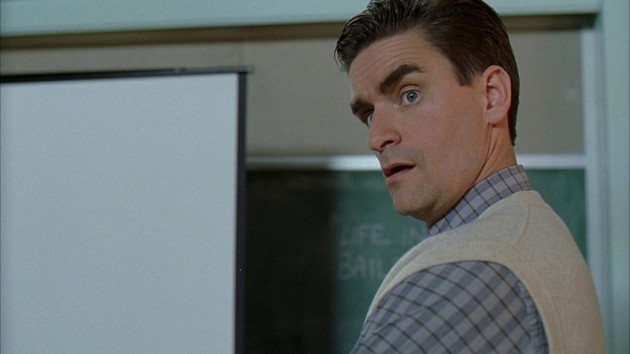
Peter Keleghan as the teacher too shocked by the dark art of the Fitzgerald sisters
Karen Walton: Well he is alarmed and shocked. And in our culture to be shocked means it is wrong. You cover it up you close it up, you suppress it. It is in the context of a tradition of pretty dry anglophone [Canadian] cinema.
Offscreen: If you see that whole photo montage as their work of art, it is pretty good!
Karen Walton: Yes they are talented girls. They are really really intelligent. And the way Ginger ends up expressing it is, ironically, not really her fault. She is bitten and becomes a monster, something inhuman. And that to me is the opposite of this feminist model, whereas Brigitte has to make a choice about whether her life is worth less than a person who will not survive.
Offscreen: Ginger Snaps is clever in how it pays homage to earlier werewolf films but also breaks new ground. When they are attacked in the woods next to the park it is like the first attack in the 1941 original with Lon Chaney Jr., who is also attacked in the woods. What is unique about it as a werewolf film is that the transformation is complete. She does not change into a werewolf and then change back to a human form like in other werewolf films. It is a gradual change and once she transforms there is no going back.
Karen Walton: That was a very important decision. That was the big puzzle when I was trying to write the film because I just thought a lot of these werewolf films were all the same. The white male actor, the sudden changes, always a guy with his friend who reacts, “hey dude what is wrong with you.” And then he changes back and so forth. So I started reading mythological and cultural stories about the human and wolf connection. Not just in our culture. But I was frustrated and told John that I did not want the film to end just like all these other werewolf movies. John told me, “don’t take the rules seriously.” And in fact there is a line to that effect in the movie, where the older guy says that this is not according to Hollywood rules. Not by Hollywood rules but natural law, and in nature there is nothing that happens and then changes back. In nature there is that one transformation, one trajectory and it is the same in adolescence; and the same in your relationships as a kid.
Offscreen: Once you have puberty you don’t go back!
Karen Walton: Yes. So when John Fawcett, as the horror fan, told me break all the rules, not to worry, well that was critical to my thought process. With one slow transformation that gave me an arc. Because I’m a character writer not a monster writer. I want to tell a story and then on that story we hung this story about the relationship of the two sisters, two friends, and a metaphor about growing up.
Offscreen: To continue how Ginger Snaps plays with the old and the new, after I show Ginger Snaps to my class I show a clip from the 1935 film The Werewolf of London to show my students the origin of the plant, monkshood, as an antidote to Lycanthropy.
Karen Walton: That is amazing, cool. Yes I love those kinds of old artifacts. I am a big fan of anthropology and history. When you are going to take on a classic subgenre like the werewolf, especially in American culture which has set rules and expectations, then the only way you can tell when something is new is to mess with people’s expectations. With what they think it must be. Take as an example the show Breaking Bad. I think it is the best version of Frankenstein I have ever seen. The character is a self-made man. He makes the monster then fights to protect the monster. It is the perfect use of Frankenstein. Frankenstein invented himself. It’s very American.
Offscreen: Ginger Snaps is a film which does not renounce its Canadianness and it is a bona fide cult film, with an especially large following in the UK. Have you ever been invited to the UK with the film?
Karen Walton: You know the screen writer does not often appear with the film if they are not also the director. So no I have not been there with the film. I was their once on a panel for horror films. But yes, a couple of years after the release of the movie John and the performers traveled with the film to the UK.
Offscreen: But why do you think the film has such a large following as a cult film in the UK?
Karen Walton: I think because it is irreverent. I was on a journey once with a UK film critic and he told me that Ginger Snaps was the first time he understood what a suburb was because they don’t have them. You set this familiar story with these girls who look familiar to us. They have a lot of the same punk views we all had. And I told him yes because we all grew up in the suburbs listening to your music! So there was this crossover. I think people recognize their own experience in that isolation, being in a bubble that you feel you cannot get out of. Which I believe is a common experience of a certain generation in Britain back in the day. As we are the children of Thatcher, but they are REALLY the children of Thatcher. So I think in the UK there is a generation that really responds to the film. Maybe because of feeling the same kinds of themes that their culture, art and music expressed. This poverty of spirit, of thinking, “what’s the point… Who do I have to kill to get out of here!”
Offscreen: Which recalls again of course The Reflecting Skin, a Canadian film directed by a British Director, Phillip Ridley.
Karen Walton: Yes that has that same dualism in it.
Offscreen: As a writer I guess you have gone through the Canadian theme of the landscape and survival in nature. And a landscape of losers rather than winners and heroes. And to an extent your film falls into that archetype. For example, the male characters are all rather weak.
Karen Walton: Well we are making fun of the male characters. That’s not Canadian but that’s what we do. We give them all weak roles. They’re not weak characters but their roles in the film are not the most important roles.
Offscreen: The mother is an interesting character. At first we laugh at her but then, by the end, we begin to empathize with her situation, after she takes all the blame and plans or fantasizes burning her house down, with the husband in it, and leaving for a fresh start!
Karen Walton: Yes Pamela played by Mimi Rogers was a real icon for us. That she would agree to do that small but key role in the film was so cool. And in fact those big moments at the end were added in before she saw the script, hoping that she would see that if she said yes we could make use of this incredible opportunity to show one more perspective of her character, on the suburban female experience. To me the sequel that is missing is, “What happens to Pamela?” Maybe I’ll do that next: Ginger Menopause!
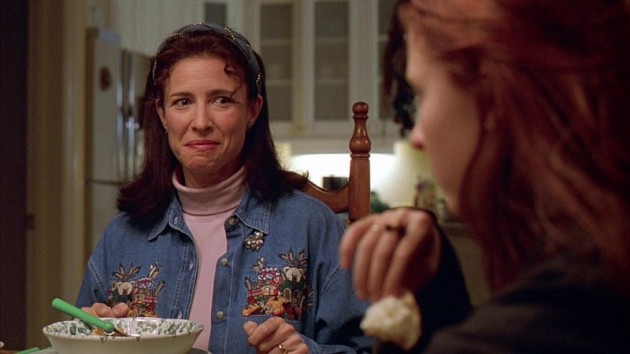
Mimi Rogers
Offscreen: As evident in the scene above with the mother, the film has a serious side to it and that is the theme of teen suicide, which you don’t often see in horror films. You have that theme running throughout the film even at the end when you have Brigitte holding a syringe in one hand and the knife in the other, death on one hand and survival on the other –and we don’t know how her decision is made– but it is the knife that wins out in the end, killing Ginger. Can you talk a little bit about your point for using suicide in the context of high school and teens?
Karen Walton: To my mind Ginger Snaps is a film about a relationship that kind of destructs. It is not so much a film about suicide as about the choices we make at a very tender age when we are not always equipped or as equipped to make these choices as we think we are. With those alienated parents and the alienated world around you, and you in your imaginary bubble with your best friend who may happen to be your sibling; or the people who support your aspirations of being different and being unique. To me the film is about a relationship that ends partly because someone gets bitten by a werewolf but also because it was bound to end. Someone once asked me if Brigitte and Ginger would still be together if the werewolf never showed up and I would have to say no. It might have taken longer but Ginger as an individual was on a very different path or quest and she was not honoring their pact. They were not destined to be together forever. That was a rationalization for the two of them being so different and uncomfortable with where they were living. As I said there are 180 turning points for adolescents and one of them is to say goodbye to the people who were making possible the worst ideas about yourself or less productive ideas you had about yourself. When the film starts, Brigitte would not be able to survive without Ginger. They have a suicide pact which grows from their mentality of a longstanding arrangement to survive something together but in the story of the movie that relationship itself becomes the number one threat to their existence. All that is a part of growing up and releasing yourself from some contracts that should not be upheld. Brigitte had to say goodbye to Ginger, but I’m sure she would not have chosen these terms. Neither one of them had a choice in that department. So again the film to me is not about suicide, that conscious choice of taking a life, but about who invites victimization and who says “F this” I’m getting out of here.
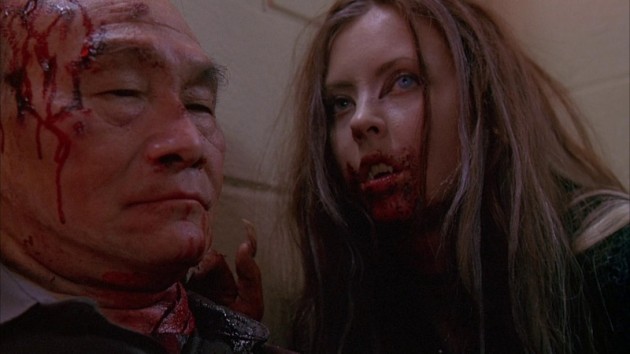
Offscreen: To return to Ginger’s sexual empowerment, I like the way the violence is sexualized like in the scene where she kills the janitor. She describes the violence to Brigitte in such ecstatic, sexualized terms. And then at the end of the exchange between her and Brigitte it cuts to an overhead bird’s eye view of Brigitte rolled up on the ground in a fetal position. The “God’s Eye” view and the fetal position suggests the idea of Brigitte being reborn, apart from her sister as her own separate entity. Even her mother earlier in the film reprimands Brigitte for clinging too much to Ginger. My question is, how is that sort of a shot written into the script because I imagine you do not write the actual camera angles?
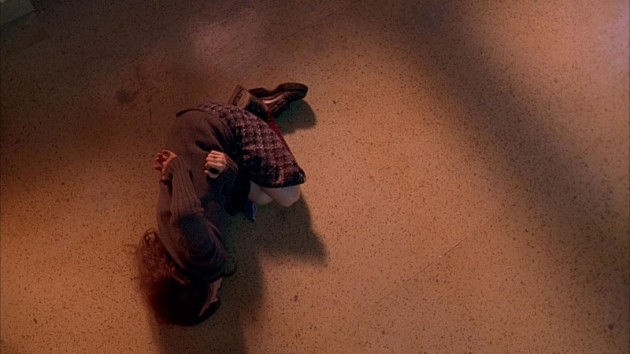
Karen Walton: Yes the direction is brilliant. Well, you get a tight movie like that between story and depth of character and style when the writer and director are having a dialogue from the beginning, before there is anything on the page. John would look at me and say, “You are weird. You are very funny. You should write this movie.” And I’m thinking I do not write these kinds of movies. And John told me that is EXACTLY why you have to write this movie. This shows what two entirely distinct artists can come up with together. But when he is shooting there isn’t a line in that script that is not on our shooting schedule. The editing is built into the script. Vincenzo Natali did the storyboards. We are one big family over there!
Offscreen: So where do you live now?
Karen Walton: Toronto. But we all began our filmmaking career at the Canadian Film Center.
Offscreen: As a final question I’d like to bring up the similarities between Jennifer’s Body (2009, Karyn Kusama) and Ginger Snaps, though I don’t think that film is as cool as Ginger Snaps!
Karen Walton: Thank you!
Offscreen: In Jennifer’s Body you have these two characters, Jennifer (Megan Fox) and Needy (Amanda Seyfried) that are close friends. One of them is obviously sexier, Jennifer, and then when the sexy one becomes possessed by a succubus/demon she turns into a man-eating machine. No one suspects her for the murders except her in the know best friend Needy, who must try to stop her from killing. There are lot of parallels to Ginger Snaps, though it is different in many ways too, more comedic and overtly reflexive, but I am wondering what you thought about this film having such a great similarity to Ginger Snaps?
Karen Walton: Honestly I have not seen the film. I have heard about the film through the Ginger Snaps fans that were upset. And I know that Diablo Cody has been asked about it, but I have not heard or listened to her respond. I am in a hard spot because I have not seen the film and do not want to have an opinion about something I’ve not seen. But I understand that there are similarities, that is all I can say. And because I am a Diablo Cody fan and need to see it first before I can comment on it. I’m waiting for the day when we can get together and chat it out over some beers! But if my script inspires something then that is great. I take that as a compliment. And keep in mind that like any genre, horror evolves in very fast increments during the period it is popular. So if they saw the movie and they liked it and may have wanted to do something like that, well that is not so different from what we were doing with Ginger Snaps. I love the old werewolf films and An American Werewolf in London. The old Universal movies. John Fawcett was telling me to watch more David Cronenberg. I had never seen a lot of Cronenberg. When I went back and watched those films that too influenced how I built these characters. Dead Ringers is the most deeply disturbed relationship movie I’ve ever seen. And it is about two brothers.
Offscreen: I know you and John Fawcett were influenced by Girl Interrupted and Heavenly Creatures.
Karen Walton: Yes when we pitched the film it was Cronenberg’s The Fly meets Heavenly Creatures!
Offscreen: That is a great combination and maybe a great way to end our conversation.
Karen Walton: My god it took us about four months to come up with the right combination of films to compare this to. The weird thing is we cannot really care what the people think because we want to make a film that we want to see!
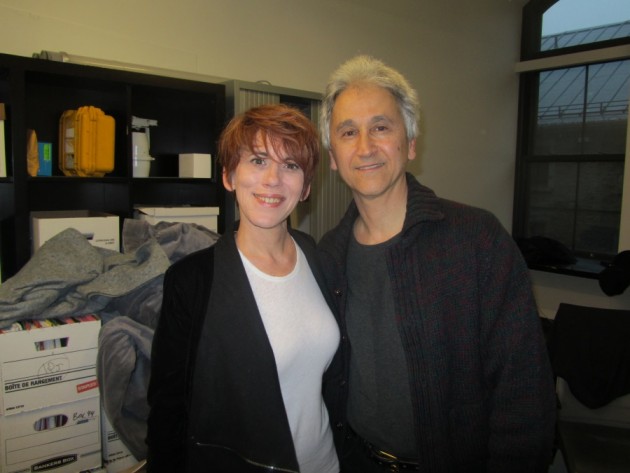
Author with Karen Walton
After being introduced by a couple of young local media figures, including CBC Radio Host Sonali Karnick, Karen Walton took the time to graciously invite a pen pal she had met over the internet who told her he would be at the event, a fan named Alfredo Masin. Somewhat embarrassed to be asked up to the stage, a surprised Alfredo Masin joined Karen, who was super nice to him. Alfredo gave Karen a big appreciative hug and then sheepishly handed over some items for her to sign. She thanked the audience for coming and expressing how grateful she was and happy to come from Toronto. For the next 30 or so minutes Walton fielded questions from the near capacity audience.
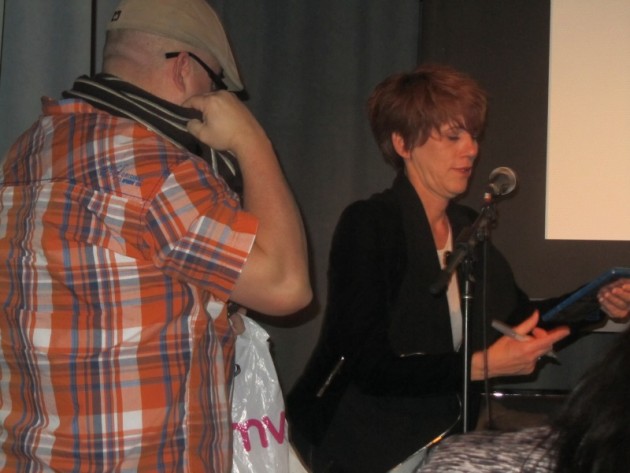
An impromptu signing for a fan
Audience: The werewolf as a metaphor for the coming-of-age and sexuality is something that we see a lot of but that we usually see it with guys so I found it is so refreshing to see it from a female perspective. When you set out to tell the story was that something that was foundational or did it come out of the story?
Karen Walton: The way the story came together is very interesting. The director John Fawcett and I met as young artists. We were quite different. John told me he really wanted to do a werewolf movie and thought I should write it. I told him that was a terrible idea because it is the same story over and over: some dude turns into a monster and back again and inevitably gets away with it because of the help of some other dude. So I was not particularly inspired by the form. John then urged me to write a werewolf movie that I would want to watch and so that was the spark. We knew it would be about two young women. They might have even been twins at one point, which has later repercussions if you are familiar with the TV series Orphan Black. So Ginger and Brigitte became sisters who were biologically close in age because they were almost originally conceived as the same person before I realized that wasn’t possible. I do not tend to see films that people my age normally go see. Dudes being monsters was really up there and this was in the early nineties coming after the eighties where you had some awesome women slaying the dragon, but there was still this idea of substituting a woman for a man, and because I am a difficult person I found that ludicrous because everyone knows that women do things very differently than most men. I just wanted to take something apart that I thought was very simple and straightforward and do it in a way that would frankly entertain my girlfriends who do not go to horror films and we’re not interested in monsters. I love monsters but they were getting kind of predictable to me at that point.
Audience: My question is about the continuity of Bailey Downs. I was so psyched when I saw that you set Orphan Black in the same neighborhood you had for Ginger Snaps so I wonder if you have any plans for the neighborhood in future?
Karen Walton: That’s a cool question. I’ll have to text everyone at Orphan Black and tell them that you asked that.
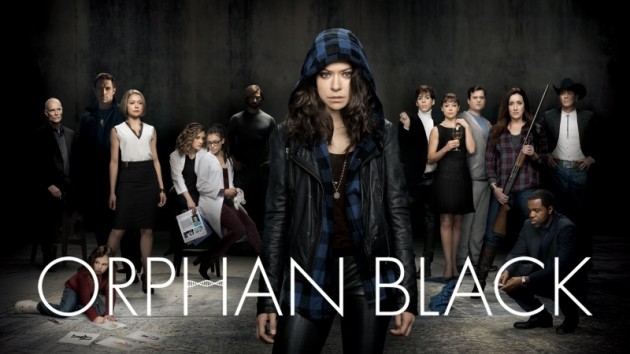
Orphan Black
Audience: I heard that it was based a little bit on the movie The Craft.
Karen Walton: Well, in fact the original Bailey Downs which appears in Ginger Snaps is a play on a neighborhood next to where I used to live call Bonnie Doon, Alberta which is Scottish. It was a neighborhood that you had to take a bus for 2 hours from to get to a mall. That was life in Edmonton. When I was writing Orphan Black in the very first season before we even started shooting anything, a memo came to our writer’s room from the art department, who were unrelated to Ginger Snaps. If you do not know anything about the show Orphan Black is a TV series co-created by the gentleman who directed Ginger Snaps, John Fawcett and the other co-creator is my best male writer friend in the profession, Graeme Manson. We went to the Canadian Film Center together. This gets a little convoluted but those two dudes made this TV series 20 years after we made Ginger Snaps and a note came to us from the series asking my permission to name the suburbs that Kendall Malone (played by Alison Steadman), the frustrated lady with purple signature clothing, lives in. If you know the show, she is quite a character. When we we’re introducing the character in season two and three we had to show the context of where she was living and so the art department asked me if they could name this place Bailey Downs. I was just charmed and thought that was lovely. The note said “John says it is OK if it is OK with you.” So that is how Bailey Downs got into Orphan Black as the town where Alison lives, 20 years later. I write about this world all the time because that is where I grew up. Most of the people who worked on Ginger Snaps grew up as teenagers in places like this. With desolate look-alike streets with dead ends. It is not so common in Central Canada but in Western Canada outside the major cities are full of these neighborhoods. They all look so much alike you can get lost in them, on any street at any time because there are no landmarks. This kind of place is iconic for where a lot of us grew up. When I moved to Alberta I could not find my house for the first week or two. We had to leave a colored rock on the steps. I wasn’t stupid or anything, I just had never seen a street where the houses were all the same, like in a horror movie. I have a funny postscript to this story. We had that big Bailey Down sign from Ginger Snaps for Orphan Black outside the studio and on Twitter comes a photo from Jordan Gavaris, who plays Felix on Orphan Black, of the Bailey Downs sign up against the building with the tweet “Ha ha, I bet no one here gets this reference.” I don’t want to embarrass him but he did not realize that John the creator of the show he was on and Karen the writer were the John and Karen from Ginger Snaps! And of course we had to tell him, yes dude we do get the reference. It is us. I know we probably do not look anything like you think we did then because we are old now!
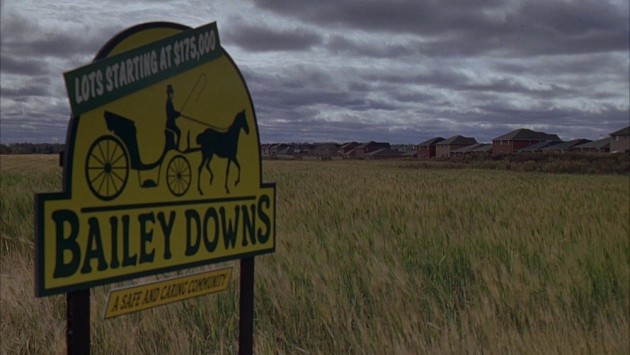
Audience: Having made the choice to reverse genders from the traditional werewolf story was it difficult to get it to production? Did you get any resistance there, or did it take a long time to get it shot?
Karen Walton: There are two questions there. First, I did not reverse genders. I had an issue with that, with pretending that just casting a woman in the same hero trope was going to work. Ginger to me is the opposite of that. I created two female roles that drove their own stories and decided their own fates, which in horror at the time was very unusual. It is getting better now but at the time no one did that, at least an American cinema. In terms of getting it into production, that kind of thinking is like a Hollywood model where someone else decides if your movie gets made. John and I sat down and decided to make a movie. We decided to make the film whether or not anyone would be talking about it 20 years later. There was no big studio involved, no producer. The producers came on about a year or two into the process. We chose who we would work with. We were all independent filmmakers meaning literally that it was just us making the movie. Thank goodness we were in Canada where, not all, but some financiers we’re very interested in seeing what would come of this crazy script. Where the women were not pretending to be dudes pretending to be women but telling a version of a very popular story in a different way. Because of who they were, instead of what their genitals were. When we were looking for distribution if we did not like the way people responded to the movie we would just leave the meeting because they were not interested in making our movie.
Audience: How about Telefilm?
Karen Walton: Telefilm was on board from day one and gave no resistance. In fact the original distributor of this movie is now the head of English Telefilm Canada in Toronto, 20 years later, isn’t that funny; but at the time he was a small distributor and loved the movie and wanted to help make the movie. Telefilm was great. In fact they were the agency that publicly defended the movie when a whole bunch of casting directors in Toronto decided that it was not Canadian for ladies to say “fuck” and talk about their periods. And thought our Telefilm money should be taken back. At the time the head of Telefilm did a full page article in the Globe and Mail defending the screenplay and the film. The film had not existed yet but explaining why Telefilm had supported the film precisely because of all the reasons that people like you still show up, but back in the day it was not seen as a typical Canadian film and there were some filmmakers angry that we were financed. Ironically Telefilm defended our creative honor in a national newspaper before there was even a movie publicly. Which seems insane but true.
Audience: I really want to know just in your opinion, who do you think was the werewolf that bit Ginger?
Karen Walton: Oh my god Steven Hoban one of the producers constantly wanted to know that answer: where did that werewolf come from! Of all questions I have not seriously considered that is one of them. I’ve carefully considered what I would do differently but never where that thing came from. I will send a memo to the unit and see what they say. To me it was just a metaphor for what comes between you at that age and changes your path. I don’t know if anyone is watching that Netflix series 13 Reasons Why, but it is all these tiny compact stories, like this one, about how relationships change at that age, in an infinite number of small but important ways. So for me that poor creature that bites Ginger and gets the movie going, I don’t even know if it is a he honestly, is just that force of nature that comes between you and what you think is OK and changes everything.
Audience: Ginger Snaps is easily in my top five horror films of all time. I have two questions number one, were you involved in the two sequels?
Karen Walton: No. I know my name comes up in the credits but for the characters. In Canada unlike the U.S when the screen writer writes a screenplay they retain the copyright of the original elements and we license those elements that make other films, so they had to get my permission to make the other films but they did not have the guarantee that I would write them. So they are using the characters from this film. Part of our interest in making these characters as a bunch of newcomers is if we got to make sequels and prequels we would give other new talent the chance to work. And that is what happened. The editor of the original film Brett Sullivan ended up being the director of Ginger Snaps 2. Two other emerging female screenwriters got a shot at writing a Ginger Snaps movie, as a result of using those characters. I could not do it at the time for two reasons. Firstly, I felt I had said all that I have to say on the subject. And secondly, at the time I put a lot of really cool projects on hold while we were shooting Ginger Snaps. While we were shooting Ginger we were shooting my first CBC movies in the “The City” TV series and immediately after that I went to Queer as Folk, which was a different kind of edge cutting for queer culture on television. I had these amazing opportunities that grew out of this movie and I did not want to spend the rest of my career or at least the next 10 years doing the same movie a bunch of different ways. I wanted to do these other cool things
Audience: For my second question. I think you have a great grasp on how to tell a horror story so will you ever dive back into horror again? Not necessarily with these characters….?
Karen Walton: Dude you should come over to my house, every morning it’s a horror story. I am horror. The short answer is yes but long answer is, I cannot talk about it. I know I am doing what those gross mainstream media things say, but I am not playing to tease you or anything because I cannot promise anything, but yes. I did get hired to write a lot of really cool horror movies in Hollywood after Ginger Snaps was sold there but unfortunately none of them went very far. You’ll notice that horror is cyclical. There will be something really cool that comes out and then people make something somewhat cool and then it is over. That happens a lot every 5 to 7 years. There is a little horror thing that is cool not in the movies but on cable television so hopefully there will be something coming from me to you. It’s not because I have not been trying, though I did give up for a while on horror because they would say they wanted Ginger but they literally wanted Ginger under another title, or they would choose another kind of movie and then we’d get into comic book movies and I don’t do those. I left movies and went to television and it has turned out OK but now I am going to combine both and if this is not written by me at least you know I am going to make it possible for you to hear whole bunch of new hot voices in horror, for sure. That is my mission, because I am an old lady now and it is more entertaining for me to watch what you guys would like to see, who you have not heard from yet. I would like to make that happen.
Audience: You said you do think seriously about what you might have changed in the movie so what would you change about Ginger Snaps?
Karen Walton: Honestly don’t tell everyone else from the movie, I don’t want hurt anyone’s feelings but it is actually a script problem. I get really restless in the first 30 minutes of the story. I feel like it takes a long time for it to get going. I am an impatient audience member even though I was told at that time and reassured that you are building a world that you will then take apart. There are reasons for why it is the way it is, but for me personally I want my movies to go boom and then slow down and tell me what the hell is going on. This one is the opposite of that and that is why it is hard for me to sit and watch. Make it a little bit more sexy and snappy at the beginning…but then I guess you would not know these girls as well as you do and you would not completely understand what they are saying to each other later because they speak in a dialect, in a weird little coded language. So I understand why we did it at the time but still I am an impatient person. I want the chocolate now! That is the only thing I would change other than that but I am still amazed people like the movie.



